Research Article Open Access
Ecological Benefits of Bioremediation of Oil Contaminated Water in Rich Savannah of Palogue, Upper Nile Area-Southern Sudan
| Samir Mohammed Ali Elredaisy* | |
| University of Khartoum, Faculty of Education, Khartoum, P.O.Box 406 Omdurman, Sudan | |
| Corresponding Author : | Samir Mohammed Ali Elredaisy University of Khartoum Faculty of Education, Khartoum P.O.Box 406, Omdurman, Sudan E-mail: redaisy2@Yahoo.com |
| Received: July 31, 2010; Accepted: September 24, 2010; Published: September 30, 2010 | |
| Citation: Ali Elredaisy SM (2010) Ecological Benefi ts of Bioremediation of Oil Contaminated Water in Rich Savannah of Palogue, Upper Nile Area-Southern Sudan. J Bioremed Biodegrad 1:103. doi:10.4172/2155-6199.1000103 | |
| Copyright: © 2010 Ali Elredaisy SM. This is an open-access article distributed under the terms of the Creative Commons Attribution License, which permits unrestricted use, distribution, and reproduction in any medium, provided the original author and source are credited. | |
Related article at Pubmed Pubmed  Scholar Google Scholar Google |
|
Visit for more related articles at Journal of Bioremediation & Biodegradation
Abstract
Plants and their associated microbes can be used in the cleanup and prevention of environmental pollution. This growing technol ogy uses natural processes to break down, stabilize, or accumulate pollutants. It is well established that most crude oils are biod egradable to a great extent, especially components as short linear alkanes or simple aromatic hydrocarbons. However, the heavy fraction, made of long-chain saturated and polyaromatic hydrocarbons and a considerable fraction of asphaltenes and resins, is generally recalcit rant to degradation. Based upon fi eldwork conducted during February 2010, bioremediation of oil contaminated water is investigated in Palogue oil fi elds in the rich savannah of Upper Nile area in southern Sudan. The paper reviews the ecological bene fi ts of bioremediation to pro- duce a clean environment of oil pollutants there, and how far it could be bene fi t for the Sudan, supported from some world experiences. The main fi ndings suggested valuable results by the Reed Bed ‘’Phragmites australis’’ (Figure 1) which breaks down the hydrocarbons sequence to produce free water of contaminants, now suitable for forestry development and recovery of natural fauna after decad es of military con fl ict. The paper concluded that community awareness is essentially imperative and a national strategy is needed for further adaptive methods for the environment conservation.
| Keywords |
| Oil; Contamination; Fossil water; Bioremediation; Phytoremediation; Reed bed, Hydrocarbons; Water ponds; Ecological Benefits; Community development; Environmental awareness |
| Introduction |
| Oil is used worldwide as the main source for energy. It threatens the natural environment as its composition is made of complex molecules, when burned produces relatively high levels of carbon dioxide, sulfur dioxide and nitrogen oxides (table 1). Global warming, the increase of average world temperatures as a result of the greenhouse effect, is one of the impacts of oil using. Carbon dioxide contributes by about 50% to the greenhouse effect, in addition to methane, chlorofluorocarbons and nitrous oxide [1]. Greenhouse effect could lead to a rise in average global temperatures between 1.5 - 4.5°C as early as the year 2030 [1]. |
| This is in addition to droughts where continental heartlands will dry out more in summer and floods as sea levels are already rising at a rate of 1 to 2 mm each year due to expansion of the top layer of the oceans as they warm and the melting of the polar ice caps [1]. Habitat destruction from drilling, pipelines and processing facilities and air pollution from petroleum emissions before being burned as fuel are also environmental impacts associated with oil. Here, forest clearance and wood burning is adding to the CO2 in the atmosphere as that area of the Amazon rain forest which was burned, adding 500 million tones of CO2 to the atmosphere [1]. Also the land taken up by all of the wells, pipelines, roads, processing plants and other facilities needed to remove oil from the ground and turn it into commercial products. The processes of oil exploration and production produce many wastes which are no longer used for their original purpose and requires disposal. Oilfield Wastes include used lubricants, filters, waste oil, sludge, etc. Such wastes are hazardous to people, property and the environment and should be managed properly. Concerning ocean pollution, only 12% of the oil that enters the oceans comes from tanker accidents; while over 70% of oil pollution at sea comes from routine shipping and from the oil people pour down drains on land. Here, heat increases temperature that results in the deaths of many aquatic organisms. Several billion salmon and herring eggs are also believed to have been destroyed [2]. Petroleum often pollutes water bodies in the form of oil, resulting from oil spills. |
| Crude oil naturally contains fossil water which chemically contains Hydrocarbons which need to be cut. Some electrical and mechanical methods are available but, they pose environmental problems to let bioremediation more advantageous. Natural bioremediation has been occurring for millions of years such as that of dead vegetation and animals. Chemical energy present in waste materials change to active microorganisms to grow while they convert organic carbon and hydrogen to carbon dioxide and water. Generally bioremediation is the optimization of the natural biodegradation process. It causes microorganisms, fungi, green plants or their enzymes to remove toxic hydrocarbons from the environment to return it to its original condition. Crude petroleum and petroleum products are degradated by contact with the microorganism under certain conditions (Table 2). The microorganism and enzymatic active material are effective for degradation in inhospitable climates and various land and open water conditions, generate no deleterious products or chemicals, and are long-acting and rapid in onset of initial activity [3]. |
| Certain plants are able to extract hazardous substances such as arsenic, lead and uranium from soil and water. This is known by phytoremediation which achieves the conditions necessary to facilitate the breakdown of contaminants. Wetland plants, such as Reeds Beds ‘’Phragmites australis’’ (Figure 1) are capable to do that. Reeds Beds root structure composes rhizome, secondaries and tertiaries rootlets. Rhizome is a thick horizontal underground stem whose buds develop new roots and shoots of secondaries and tertiaries. Through this roots structure Phragmites australis transfer atmospheric oxygen down in order to survive in waterlogged conditions. This creates a healthier soil environment with pockets of both aerobic and anaerobic activity which breakdown the hydrocarbon sequence of oil contaminated water and releasing CO2 into the atmosphere. Phragmites australis naturally accumulates high levels of cadmium and zinc from the environment similar to sunflowers which were also used to clean up uranium. Phytoremediation-related processes can change the location or chemical makeup of contaminants [4]. |
| Studying the interaction between plants and microorganisms during petroleum-hydrocarbon bioremediation in Pacific islands coastal soils, found that an increase in the grading populations’ size of the hydrocarbon-degrading populations of microbes, elicited by rhizodeposition, is generally regarded as conducive to an enhanced degradation of petroleum hydrocarbon pollutants in vegetated soil [5]. The process of bioremediation can be monitored indirectly by measuring the oxidation reduction potential or redox in soil and groundwater, together with pH, temperature, oxygen content, electron acceptor/donor concentrations, and concentration of breakdown products such as carbon dioxide (Table 3). |
| The treatment of environmental pollution by bioremediation is a promising technology, having the potential to treat contaminated material at the site or to remove contaminated material to be treated elsewhere. Some examples of bioremediation technologies are bioventing, land farming, bioreactor, composting, bioaugmentation, rhizofiltration and biostimulation [6]. Various genetic approaches have been developed worldwide to optimize enzymes, metabolic pathways of organisms and plants relevant for biodegradation [7]. Although most organisms have detoxification abilities (mineralization, transformation and/or immobilization of pollutants), microorganisms play a crucial role in biogeochemical cycles and in sustainable development of the biosphere [8]. |
| Bioremediation can occur on its own (natural attenuation or intrinsic bioremediation) or can be spurred on via the addition of fertilizers to increase the bioavailability within the medium (biostimulation). Recent advancements have also proven successful via the addition of matched microbe strains to the medium to enhance the resident microbe population’s ability to break down contaminants ‘’bioaugmentation’’ [9]. Bioremediation technologies are also applied to contaminated wastewater, ground or surface waters, soils, sediments and air where there has been either accidental or intentional release of pollutants or chemicals that pose a risk to human, animal or ecosystem health. Different approaches to bioremediation take advantage of the metabolic processes of different organisms for degradation, or sequestering and concentration, of different contaminants [10]. |
| Data and Methodology |
| Sedimentary basins of Sudan hold oil. First oil explorations started in 1959 in the Red Sea area by Chevron Oil Company which was also allocated 516,000 km2 into the interior southwestern and southeastern basins of Sudan. In 1981, oil explorations started widely and many oil companies such as GNPOC; WNPOC; CNPC; PDOC, SUDAPET hold concessions of oil exploration and production in the country (Figure 2). Petrodar Oil Operating Company (PDOC) holds oil concession in Palogue, blocks 3 and 7 (Figure 2). By now there are 180 operating oil wells distributed within Palogue, Molaita, A’adar, and Gimri oil fields all are linked with an export terminal near Port Sudan. |
| Rich savannah environment of Upper Nile area allowed for ecological diversity. Annual rainfall amounts to 700 mm and soils are black clayey supporting rich savannah forests, grasses, wild animals and possibilities for animal ranching. However, following World War 2, short staple cotton and Dura (sorghum vulgare) were introduced into areas along and nearby the White Nile River. Irrigated and rained based agricultural schemes had extended form Dabat el Fukhar in the far north to Malout and Khor A’adar in the far south, now producing oil. Grazing areas outside el Gaigar were allocated for ground nuts production while animal hunting was profitable. But, due to civil war in southern Sudan It was severely affected by desertification, deforestation and decreasing wild animals. The main objective of this paper is to highlight the importance of bioremediation of oil contaminated water as a tool to compensate for such an environmental degradation. |
| The fieldwork was conducted during 12-14 February 2010 in Palouge oil fields in the Upper Nile area of southern Sudan. The data was collected by direct interviewing with field engineers, laboratory technicians and representatives of the Dutch Company managing the project, field managers, field officers, and safety engineers as well as relevant office data. The whole processes of oil exploration, production and bioremediation of oil water by Reed Beds ( Phragmites australis) were investigated. 90% of oil contaminated water was cut. The remaining 10% goes with the crude oil to el Jabalein Central Processing Facility (CPF) where 9.5% of water is cut there, while the remaining 0.5% is accepted in oil marketing. El Jabalein Central Processing Facility (CPF) was visited during 17-19 February 2010; its results were not included here as oil water is still below the level to introduce Reed Beds. |
| Results |
| Bioremediation of oil water |
| Palogue’s oil fields produce 300,000 oil barrels/day (Figure 4). These amounts were received into the oil gathering manifold (OGM), consisting of 13 main units. From thereafter, the crude is processed into the Field Processing Facility (FPF) to cut water. This produces around 133,000 barrel of water/day, from which 16000 barrels were injected back into oil wells to facilitate drilling while the remaining 114000 barrels of water are bioremediated. Bioremediation starts (Figure 5) by the flowing of contaminated oil water into the barrow bits (3 bits) and then by gravity water flows to the lagoons (6 lagoons, see Figure 3). Through valves, water then goes to the Reed Beds area (9 divisions) where bioremediation takes place. Lastly, the bioremediated water is transferred through channels into the forest area. A Reed bed is brought from Um Dom area in southeast Khartoum north town. |
| Ecological benefits of bioremediation in palogue |
| The use of Reed Beds had succeeded to dissolve contaminants to enable oil water discharge to the Palogue’s environment to prevent environmental pollution. Ecological benefits of this produced oil treated water are many, among which are improving local biodiversity with the addition of a constructed wetland (Figure 3), the increase in key resources such as food and water which created a dramatic boost in ecological diversity. This impressive improvement to the immediate ecosystem is evident with common bird species. Figure 3 (photo-1) depicts a huge lagoon of bioremediated oil water. On the far side of the photo there is an extending line showing the outside limit of the forest area where trees can be noticed. This constructed water body will, of course, be good enough for attracting birds and animals and growth of trees all of which can allow for biodiversity. |
| Bioremediation water quality criteria for irrigation of the forest area in Palogue, is judged versus FAO standards or guidelines. Chloride (Cl-), boron (B), trace Elements, nitrogen (NO3 - – N) and pH impose no restriction on use of water for irrigation while for bicarbonate (HCO3 -), It is important only if sprinkler irrigation system is used. The fieldwork results indicate that aqueous solubility, the octanol-water partition coefficient, and organic carbon content of the soil are affecting the contaminant concentration in the water phase. For livestock water quality criteria, salinity requirements for irrigation are more restrictive than those for animals but highly saline water or water containing toxic elements may be hazardous to animal health and may even render the milk or meat unfit for consumption. According to field engineers in Palogue, the bioremediated water can be rated as very satisfactory for the use by livestock and can also be usable for all classes of poultry. |
| Downstream implications once verified as clean, all water are released to the environment. It is immediately used for forestry or bio-fuels only after a toxicology testing program verified the water as suitable for forestry plantation. This situation is supported by some tropical trees like which have significantly accelerated the degradation of petroleum hydrocarbons in coastal tropical soils [11]. After forestation phase, such water can be used further for other purposes in Palogue. |
| Improvement in local biodiversity in downstream is beneficial use for local community in Palogue. Typical water requirements per hectare (1 feddan = 1.038 acres = 0.42 hectares) are that water/ hectare for grass is 1.0080 m3 /day, cereal is 1.2096 m3 /day, charcoal crop (referring to tree species that were burnt to produce charcoal) is 0.8568 m3 /day, mahogany, water melon, and cucumber is 1.35105 m3 /day, forestry area water use with cereal and vegetable crop is 58.8 km3 /day, forestry area water use with tree crop is 41.0 km3 / day, irrigation of cereal forestry requires additional 1mm rainfall / day, irrigation of tree forestry creates 2.5 mm standing water / day. Water requirement is seasonal and can be managed for rotational crop use and proper irrigation can potentially produce up to 4 times the output of rainfall irrigated agriculture (Fieldwork, 2010). Also, Windsor bean, herbaceous legume reaching 30 - 180 cm in height and annual vigorous tap root provides groundcover in 55-90 days will outgrow any residual vegetation reach a stage ready to be ploughed into the soil before natural vegetation reaches seeding stage. Toxicology ensure that there is no toxicological problem with crops grown from produced water and testing cereal, fruit, vegetables, fodder, nuts, animals, eggs & milk, and fish within 18 months growing and testing crops to ensure safe human and animal consumption. According to Hunag and Takeuchi [12] the sustainable development of an oasis-style ecological and economic system, making good use of the water resource of northwestern China, is suggested to develop the aquaculture. In addition, integrating aquaculture in lakes and reservoirs (culturing Chinese domestic fishes as well as other aquatic species) with agriculture on the arid lands near lakes and reservoirs will contribute to the bioremediation of the arid ecosystem, to the improvement of the biological diversity, and to the stabilization of an oasis ecosystem of Jiuquan City and its surrounding areas. Moreover, the development of aquaculture and plantation can result in not only economic and ecological benefits, but also profound changes to the industrial structure of Jiuquan City. |
| Naturally occurring bioremediation and phytoremediation have been used for desalination of agricultural land by phytoextraction which has a long tradition. This depends on using some plants having the potentiality to extract salt from agricultural soils used for long periods of time. When bioremediation is applied by people, microbial biodegradation processes are said to be managed, one example is land farming by managing biodegradation of organic compounds that are distributed onto the soil surface, fertilized, and then tilling. The proposed fallow crop by remediated water in Palogue is applied for initial crops. This will improve soil water retention ability, regulates alkalinity, adds nutrients and reduces phytotoxic effects. The study on phytotoxic effects on the growth of red beans (Phaseolus nipponesis) and corn (Zea mays) showed that bioremediation with Nocardia sp. H17-1 reduced phytotoxicity more in corn than in red bean, suggesting that this microbial species might degrade PAHs to some degree [13]. The biodegradation of PAHs in soils can be enhanced by employing surface-active agents. These results indicate that SL and HS are biodegradable and efficiently enhance PAH bioavailability in soil. These natural surfactants significantly intensified the aerobic bioremediation of a historically PAH-contaminated soil under treatment conditions similar to those commonly employed in largescale soil bioremediation [14].The seed germination and the activities of the assayed enzymes, amylase and protease, were same as before or better in bioremediated soils [15].The research is going on crops used as fodder to test animals and animal products in Palogue. |
| Soil in Palogue is predominantly black cotton clay and its chemical composition included calcium bicarbonate, hence requires improvement with nitrification and addition of acid balancing organic matter. Phytoremediation has the potential to enhance soil improvement and thus clean up soil from unwanted elements. Also for soil pollution treatment, a study on the possibility of hydrogen peroxide pretreatment and plant system to remediate soil pollution in Fuyang County in China showed that H2O2 could enhance the availability of Cu and Zn in soil and planting with Ryegrass influenced the behavior of pollutants in soil [16]. By means of the biostimulation and bioaugmentation in the micro-ecological environment of contaminated soil with petrochemical hydrocarbons, the biodegradation rates and mode of the contaminants were significantly improved [17]. In addition, the use of calcium peroxide provided oxygen for contaminant biodegradation in a saturated soil [18]. However, phytoremediation indirectly improve soil quality by improving soil structure (aggregates and peds) and increase porosity/ aggregation and therefore water infiltration, providing nutrients (nitrogen – fixing legumes) accelerate nutrients cycling and increasing soil organic carbon [19,20]. The growth of certain hardy plants in a contaminated soil can allow the growth of the other less hardy plants. Cunningham [20] indicated that a tolerant grass species (Vetiveria zizanioides) thrived in the clay soil contaminated with up to 3% of total petroleum hydrocarbons. The same soil was initially extremely phytotoxic to a variety of crop plants tested. |
| In Palogue oil fields, it is expected that with the addition of a constructed wetland (Figure 3), evapo- transpiration rates will rise considerably to allow for precipitation; possibility for compensation for forests cutting for oil investment, and prospects for future forestation and better human occupancy in the area. Of course, these will ultimately provide natural assets for agri.-related activities, where for example, the fishing community is flourishing in Palogue and similarly in Higlieg, an oil field belonging to GNPOC Oil Company in block 1(Figure 2). |
| In Palogue, higher evaporation rates due to high rates of heating during summer and considerably average temperature does not fall below 35°C during winter, the climate of closer areas to water ponds recorded lesser temperatures by 3 Celsius degrees compared to far areas from water ponds. |
| A negative ecological impact of oil production in Palogue is the emission of oil gases which amounted 40000 M3/day including H2S, CO2, CO, C (fieldwork, 2010). These gases were burnt in situ and by so might raise local temperature of the neighborhood and increases vulnerability to respiratory diseases. Records by Palogue Clinic depicted that respiratory diseases made up 17.44% of total of diseases during 2008 [21]. But, such gas emissions, if properly treated, can generate a heating source for tapped water in the employees’ camps during winter season or for other related human needs. Here, phytoremediation has the potential to help reducing greenhouse gas emissions because it does not require the use of pumps or motors that give off greenhouse gases and plants used in phytoremediation may serve as sinks for the greenhouse gas CO2 [22]. Phytoremediation help eliminate secondary air or water – borne diseases where some plants accumulate PAHs from the atmosphere [23]. It also indirectly, stabilizes the soil thus preventing erosion and human exposure by preventing the inhalation of soil particles carried out in the wind [19]. |
| Ecological benefits served for new human settlements inside oil fields in Palogue. Resettlement of the nomad population is directly correlated with peace agreement and figures for southerners’ returnees display an increase. The oil fields support these people by providing jobs in oil related activities, fishing, water for irrigated agriculture and alternatives for wood fuel, schools, dispensaries and other amenities. In April 2009 local people constituted 60.46% of patients being admitted to the health unit or got vaccination against children infectious diseases. Yet, peace agreement allowed for claiming rights on land owned by local people. Here, oil companies have established specialized legal authority for compensations that, if properly utilized, can work for local community development. |
| Infrastructure for oil exploitation included road construction, an airport, water stations, and new buildings, flourishing of local markets, passing of the highway Khartoum – Malakal via Palogue, introduction of education and health services among the population. All these have imperative implications for human capacity development. The distribution of such services can help for an even distribution of the population in accordance with economic activities. The benefits of oil exploitation into socio-economic development are well known by the experience of the Arab Gulf States. Traditional societies there passed over ignorance and poverty to new havens of modern life style. Oil transferred these societies to stages of safe technology oriented towards better use of natural resources. |
| Discussion |
| Bioremediation provides a technique for cleaning up pollution by enhancing the same biodegradation processes that occur in nature [24]. Depending on the site and its contaminants, bioremediation may be safer and less expensive than alternative solutions such as incineration or land filling of the contaminated materials. Biological remediation significantly cuts costs and time generally associated with contaminant clean-ups and might involve introduction of new organisms to a site, or adjustment of environmental conditions to enhance degradation rates of indigenous fauna [6]. It also has the advantage of treating the contamination in place so that large quantities of soil, sediment or water do not have to be dug up or pumped out of the ground for treatment [6]. Due to such advantages and its wide worldwide application, Sudan can benefit from that and from Palogue’s experience. Exploration of some world experiences and applications will further support that argument. |
| Palogue’s experience on bioremediation can enhance sustainable development in Sudan by cleaning up the environment from oil pollution. Oil bioremediated water in Palogue has proved beneficial for the environment of the region where water lagoons were created for bird communities, domestic animals, some other wild animals, fishing and possibilities for agriculture, irrigation, animal watering and forest plantation. Future oil projects in Sudan have planned to hold oil water treatment without chemicals additives or the expensive electronic techniques by bioremediation techniques instead. |
| Worldwide, bioremediation provides a good cleanup strategy for some types of pollutants, but it will not work for all, such as high concentrations of chemicals including cadmium or lead, and salts such as sodium chloride that are toxic to most microorganisms. Bioremediation processes are used in applications such as groundwater remediation and soil remediation [25,26]. Bioremediation has potential to provide a low cost, non-intrusive, natural method to render toxic substances in soil less harmful or harmless over time [27]. However, bioremediation is also used for reduction of heavy metal in soils [28] and the recovery and cleaning up of a contaminated medium including soil, sediment, air, and water. The microbes break down the hydrocarbons and convert them to water, carbon dioxide and amino acids, which are natural and harmless. |
| Sediments dewatering is frequently necessary after dredging to remediate and treat contaminants. Methods for that include draining of the water in lagoons with or without coagulants and flocculants, or using presses or centrifuges. Treatment methods are similar to those used for soil and include pretreatment, physical separation, thermal processes, biological decontamination, stabilization/ solidification and washing. Pretreatment may be one of the methods that can reduce costs by reducing the volumes of sediments that need to be treated [29]. According to Rajendran [30] that microbial metal bioremediation is an efficient strategy due to its low cost, high efficiency and ecofriendly nature. Researchers in China have discovered that chicken manure can be used to biodegrade crude oil in contaminated soil [31]. Further analysis of specific organisms present in contaminated beaches revealed the presence of several populations able to degrade polycyclic aromatic compounds such as phenanthrene or naphthalene, especially in those sites that had recently been restored after an important contamination episode. Probably due to the contamination record of the past in the Shoreline of Delaware Bay, indigenous populations had evolved to select for organisms able to grow and degrade components of crude oil [32]. |
| Bioremediation of soils, water and marine environments has many advantages. Due to the growing current trend around the world of drinking water from underground sources, in an attempt to replace heavily polluted surface water supplies, arsenic is causing a global epidemic of poisoning with hundreds of millions of people now being thought at serious risk in many countries. Phytoremediation has been proposed as an effective tool in arsenic cleanup where, some plants have been reported to be suitable for arsenic phytoremediation [8]. Fe (III)-reducing microorganisms can play an important role in the bioremediation of subsurface environments contaminated with organic or metal contaminants [33]. In addition to the bacterial biomineralization of organic pollutants, certain bacteria are also capable of immobilizing toxic heavy metals in contaminated aquifers, further illustrating the potential of microorganisms for the removal of pollutants [34]. |
| In rural Australia, Organophosphate pesticide remains a major environmental contaminant and poses a significant threat to environmental and public health. Rapid biodegradation to support microbial growth has been suggested [35] and the results have implications for the development of a bioremediation strategy [36]. Pulp and paper mill effluents pollute water, air and soil, causing a major threat to the environment. The biological color removal process uses several classes of microorganisms - bacteria, algae and fungi to degrade the polymeric lignin derived, and chromophoric material [37]. Studies have demonstrated that metal-reducing microorganisms can effectively promote the precipitation and removal of uranium from contaminated groundwater [38]. The performance of microscale toxicity bioassays conducted on whole sediments was evaluated during bioremediation on a crude oil-contaminated freshwater shoreline of the St Lawrence River, that remediation treatment was able to accelerate detoxification [39]. Increasing number of microorganisms is being described for their ability to decolorize and degrade artificial dyes and novel bioremediation approaches for treatment dye bearing wastewaters are being worked out. These results indicate the potential use of C.gallica in bioremediation of tannin-containing industrial wastewaters and in other applications where a reduction in polyphenols content is required [40]. All these experiences provide suitable grounds for Sudan to use and develop. |
| Conclusion |
| Investigation into how to use oil water for environment and community benefits deserves priority from the viewpoint of planning policy and execution. Sudan is progressively entering oil era and by that way the future holds using of bioremediated oil water. A suggestion for future use of such a source is proposed for Palogue (Figure 6) and is applicable for Sudan. The model is built on two terms, the short term targeting to produce rapid growing nonedible oil crop for market during toxicological test period, studying into optimizing yield and value of possible crop type. On the other side, the long term included the development of most suitable cash farming crop to balance for socio- economic development. |
| Progression in economic related activities could be strengthened through partnerships including caritas, District Fisheries, traders, micro credit finance, District Agricultural Office and banks. Yet, the most important ingredients of successful partnerships are trust, perceptions, and misconceptions. Nonetheless, challenges to rural poor involvement & participation in natural resources management, if any, could be identified and engagement strategy could be developed and presented with objectives to promote economic activities in a gender responsive manner so as to build peoples’ capacity for production and manage ponds. Results have significant implications for decision making and site management. |
| Environmental planning could be part for future development and investment for conserving natural fauna and flora in oil producing areas in Sudan. However, environmental awareness is integral part for environmental planning. These rural communities should be aware with risks of climate variability and droughts and their result in a decrease in water availability and an increase in competition, and that high rates of population growth and subsequent increased demand have increased the pressure on the resources. They also should be aware that the possibility of increasing water scarcity may lead to water-related conflicts and political instability and should learn that sustainable use and development of water resources is a daunting challenge for both the global and local communities and It requires commitments by all groups within all levels, and that without a set of coherent legal arrangements designed to ensure effective governance of water resources, their sustainable use and development are unlikely to be achieved. UNESCO [41] proposed Integrated Water Resources Management (IWRM) as a tool for adaptation to climate change that climate will lead to an intensification of the global hydrological cycle and will have a major impact on regional water resources. It is also clear that, in many parts of the world, variability in climate conditions, next to many socioeconomic and environmental developments, is already having major impacts and that such variability is increasing. Still yet, a national strategy is needed to support further adaptive methods, such as that of Palogue, for environment conservation in Sudan. |
References
|
Tables and Figures at a glance
| Table 1 | Table 2 | Table 3 |
Figures at a glance
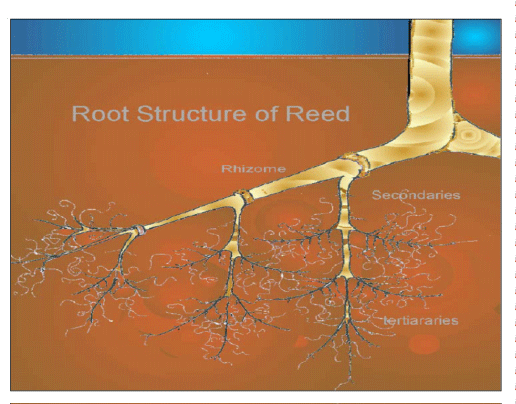 |
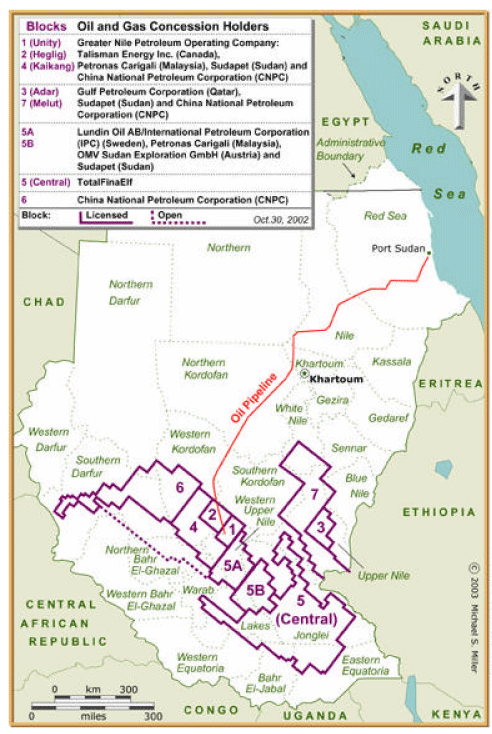 |
 |
| Figure 1 | Figure 2 | Figure 3 |
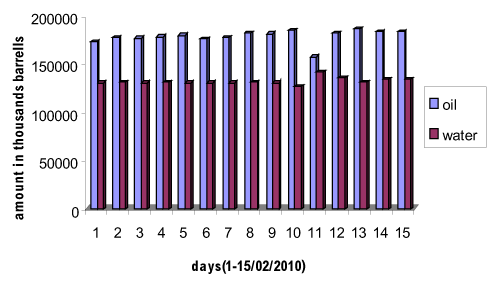 |
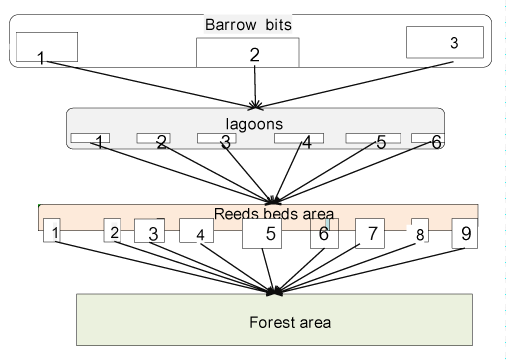 |
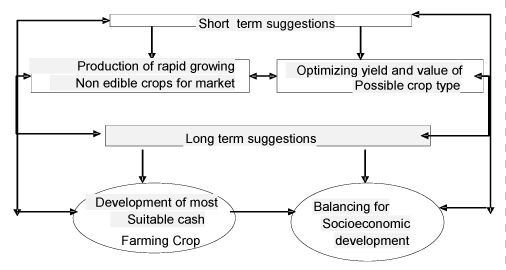 |
| Figure 4 | Figure 5 | Figure 6 |
Relevant Topics
- Anaerobic Biodegradation
- Biodegradable Balloons
- Biodegradable Confetti
- Biodegradable Diapers
- Biodegradable Plastics
- Biodegradable Sunscreen
- Biodegradation
- Bioremediation Bacteria
- Bioremediation Oil Spills
- Bioremediation Plants
- Bioremediation Products
- Ex Situ Bioremediation
- Heavy Metal Bioremediation
- In Situ Bioremediation
- Mycoremediation
- Non Biodegradable
- Phytoremediation
- Sewage Water Treatment
- Soil Bioremediation
- Types of Upwelling
- Waste Degredation
- Xenobiotics
Recommended Journals
Article Tools
Article Usage
- Total views: 18162
- [From(publication date):
October-2010 - Feb 03, 2025] - Breakdown by view type
- HTML page views : 13429
- PDF downloads : 4733
